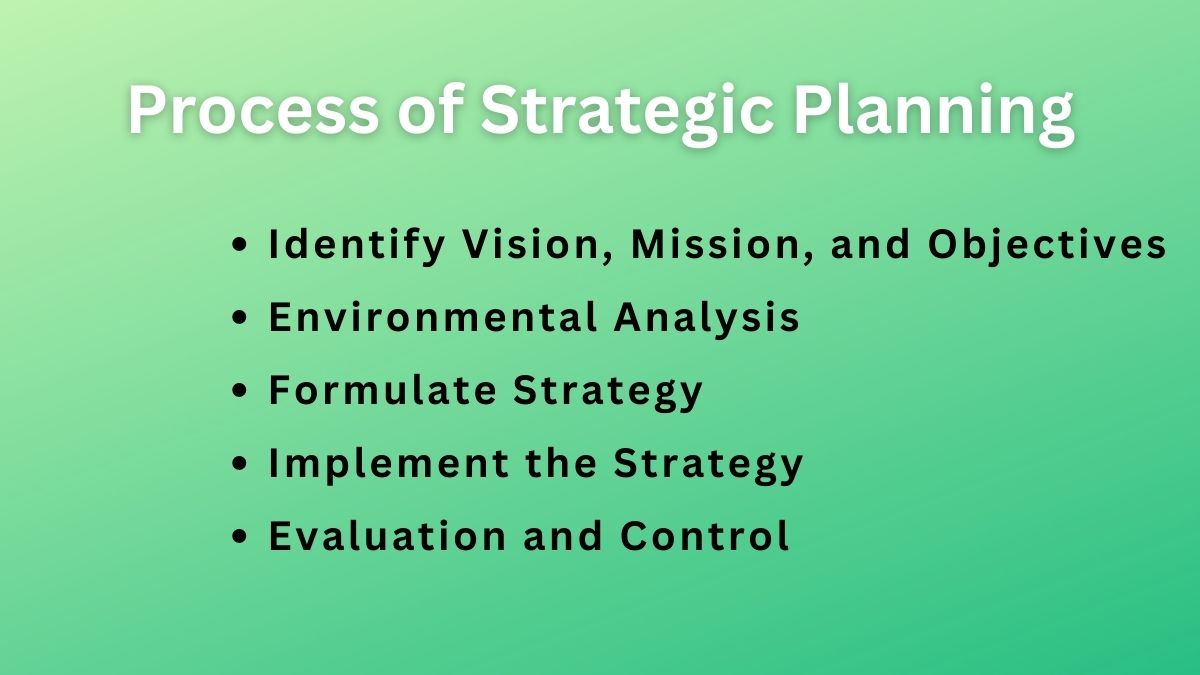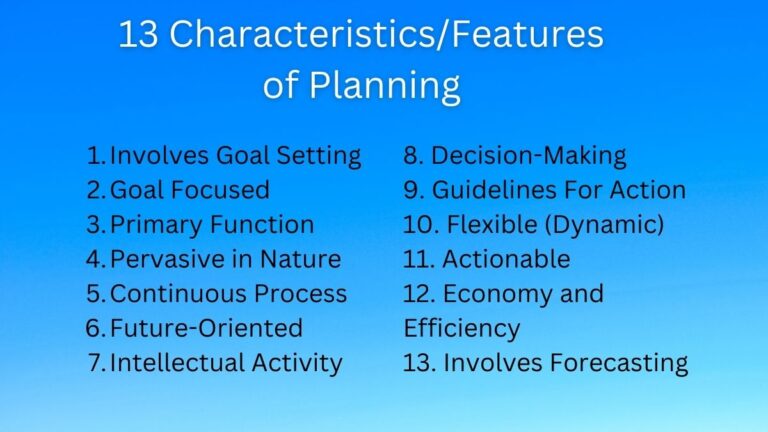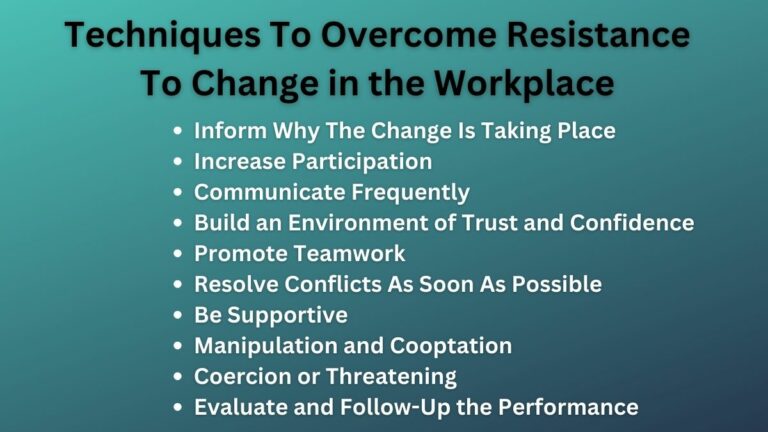Process of Strategic Planning: The 5 Steps [Explained]
Process of Strategic Planning
Strategic Planning is the process of creating a comprehensive master plan that ensures the achievement of the organization’s long-term objectives and goals. It is an effective tool to match an organization’s resources with potential opportunities.
The strategic planning process gives us the necessary steps to create the strategic plan. It helps us to identify firms’ desired objectives, threats & opportunities, set strategy, implement it, and if necessary make adjustments.
The following five are the common steps following which you can make a better strategic plan. They are:
Identify Vision, Mission, and Objectives
The main goal of strategic planning is to achieve the desired objectives of the organization that contribute to the achievement of the organization’s mission and vision statement.
The first step in the making of strategic planning is the identification of the company’s vision, mission, and objectives. The strategic plan is always committed to the fulfillment of these three, thus, it is crucial to identify them and make a strategy obeying them.
The vision is the top target of the firm that visualizes what the firm wants to become in the future. The mission gives the reason for the organization’s existence. And, the objective is the end result of the plan.
Environmental Analysis
The environmental analysis includes the analysis of the following four:
- Firm’s Strengths
- Firm’s Weaknesses
- Potential Opportunities
- and, Potential Threats
The environmental analysis is the combination of internal and external environmental analysis of an organization. The internal analysis reveals the firm’s strengths and weaknesses whereas external analysis brings potential threats and opportunities the firm may go through.
Related: Pestle Analysis
This analysis will give you the profile of strengths, weaknesses, threats, and opportunities which are also the components of SWOT analysis.
In addition, this analysis will help you to be clear on what strengths the firm has by which you can project what kind of opportunities it can grab. What are the firm’s weaknesses and from what threats you should be aware? Such insightful information is meant to add to effective strategic planning.
Formulate Strategy
Once you have successfully analyzed the environment and identified the firm’s weaknesses, strengths, opportunities, and threats you now have sufficient information to formulate the necessary strategy.
While formulating the strategy you should consider three things:
- The firm’s mission and objectives
- Firm’s strengths
- and, Potential opportunities
In addition, all the necessary factors that lead strategy towards success or failure such as weaknesses and threats should be addressed.
Your strategy should be capable of attaining desired organizational goals, competing with rivals, and realizing a competitive advantage. It should give clear direction to all the working men of the organization as to what should they do and how.
Related: What is Business Environment?
Implement the Strategy
The main goal of strategic planning is the attainment of the predetermined objectives of the firm. Once the strategy is formulated, it should be implemented, otherwise, the objectives can not be achieved and it would be considered worthless.
The strategy should be implemented the way it ensures positive results. For this, it is necessary to effectively communicate with all the organizational members and give them the necessary authority and responsibilities obeying their skills, abilities, and experiences.
It is said that the success of a strategic plan lies in its implementation. Because the way the strategy is implemented has a significant impact on whether or not the desired goal will be achieved.
After communicating with employees, in addition, you should organize necessary programs, budgets, and procedures that help them easily yet effectively complete the given duties. Conflicts and employee resistance may arise – these should be managed on time.
Evaluation and Control
The last step in the strategic planning process is the evaluation and control of implemented strategy. The evaluation and control step is just as important as the formulation of the right strategic plan.
Once the strategy is put into action its performance should be evaluated if not the result will be unknown whether the plan succeeded or not.
It is necessary you must check the progress of the plan, match the actual result with the standard, introduce amendments if necessary, and keep the strategy in the right direction.
Read Next: Process of Planning
Sajan Kushmi is a content writer with more than 4 years of experience. He holds BIM Degree. He write on the topics related to Management, Marketing, and Entrepreneurship.






